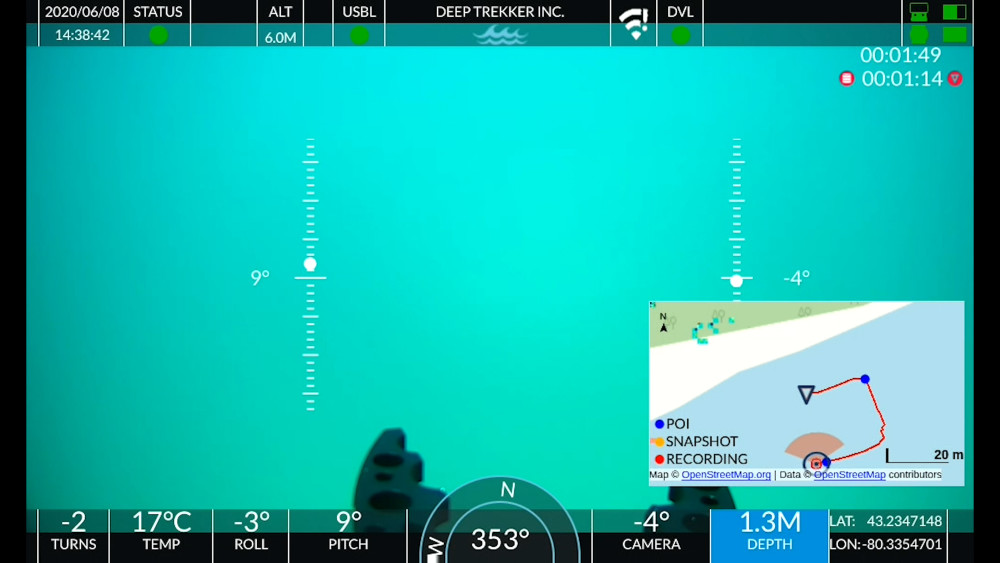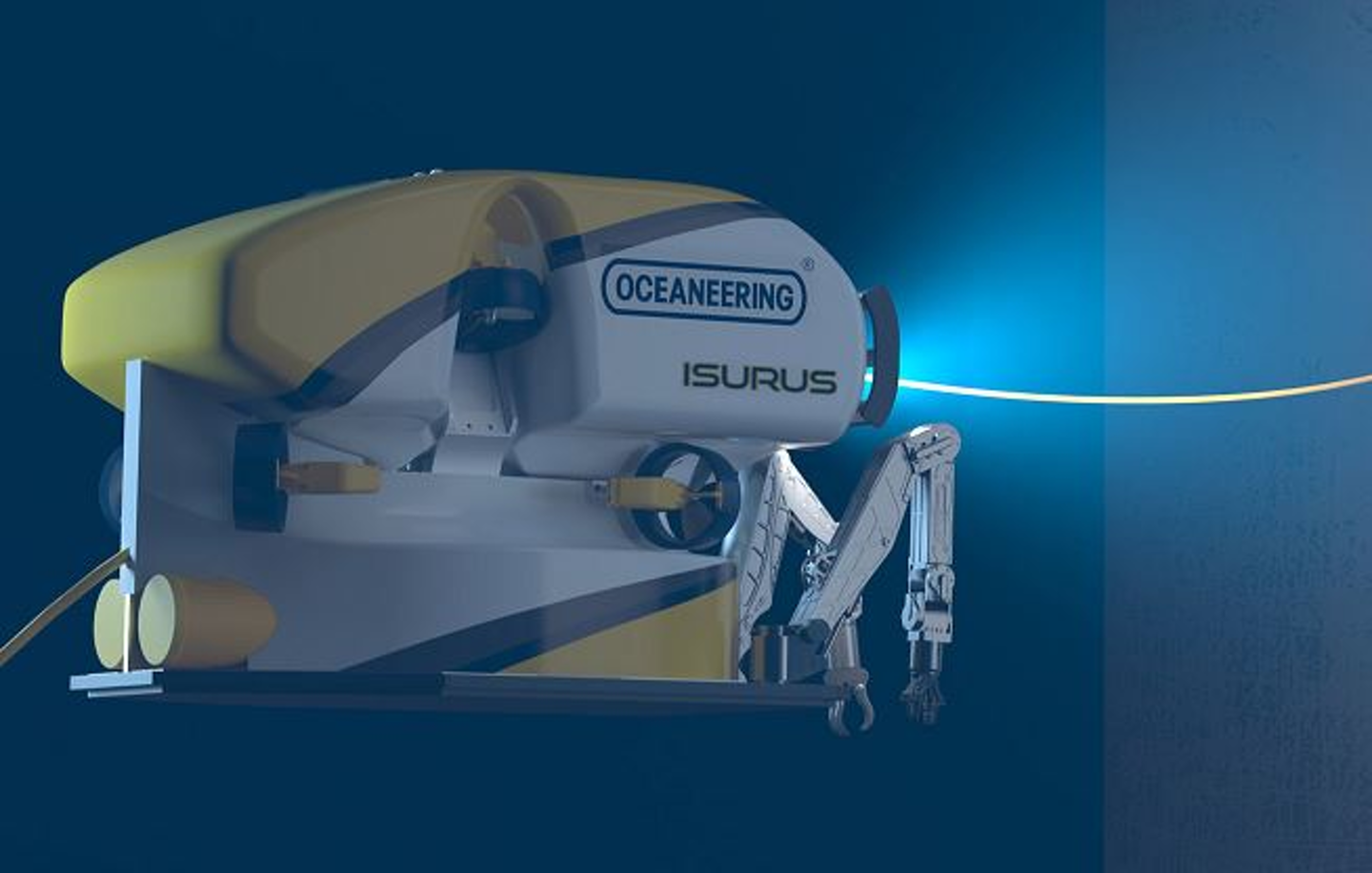Home › Forums › ROV › ROV Technical Discussions › Terminating a strength member in a tow cable
- This topic has 6 replies, 4 voices, and was last updated 10 years, 5 months ago by
Marcus Gregson.
-
AuthorPosts
-
July 15, 2014 at 12:18 pm #6841
Marcus Gregson
ParticipantHi all,
I am new to this forum. I am a marine scientist who has dabbled in home built ROVs, but am now attempting to commercialise an underwater tow camera I have developed.
I am seeking some advice from ROV World since I think there may be some expertise here with regards to terminating a cable that is under load strain.I have a 9 mm coaxial cable with two power conductors and an outer braided weave of dacron as a strength member (~500 kg). Originally the strength member was kevlar, however for cost reasons we have changed to dacron, as the kevlar far exceeded what we require in terms of breaking strain.
I am unsure how to terminate the strength member. It wont be taking the full force of the tow, as there will be a separate tow cable, however I would like to terminate it as strongly/correctly as possible.
As you can see in the attached picture, the cable comes in the back of the housing through a cable gland with strain relief. The cable outer is removed at this point so that all the conductors and dacron are exposed. The initial thought was to just epoxy it all in place, however I’m sure there is a more technically correct method to do this to ensure the load is taken by the dacron and not copper conductors. I have done plenty of web searches, but I only ever really find fiber optic terminations that have a dedicated connector to secure the kevlar strength member.
Any help would be much appreciated, even if it were just a suggestion on the correct term I should be searching for so that my Googling might be more successful.
Regards,
MAGpicture1_182.jpg 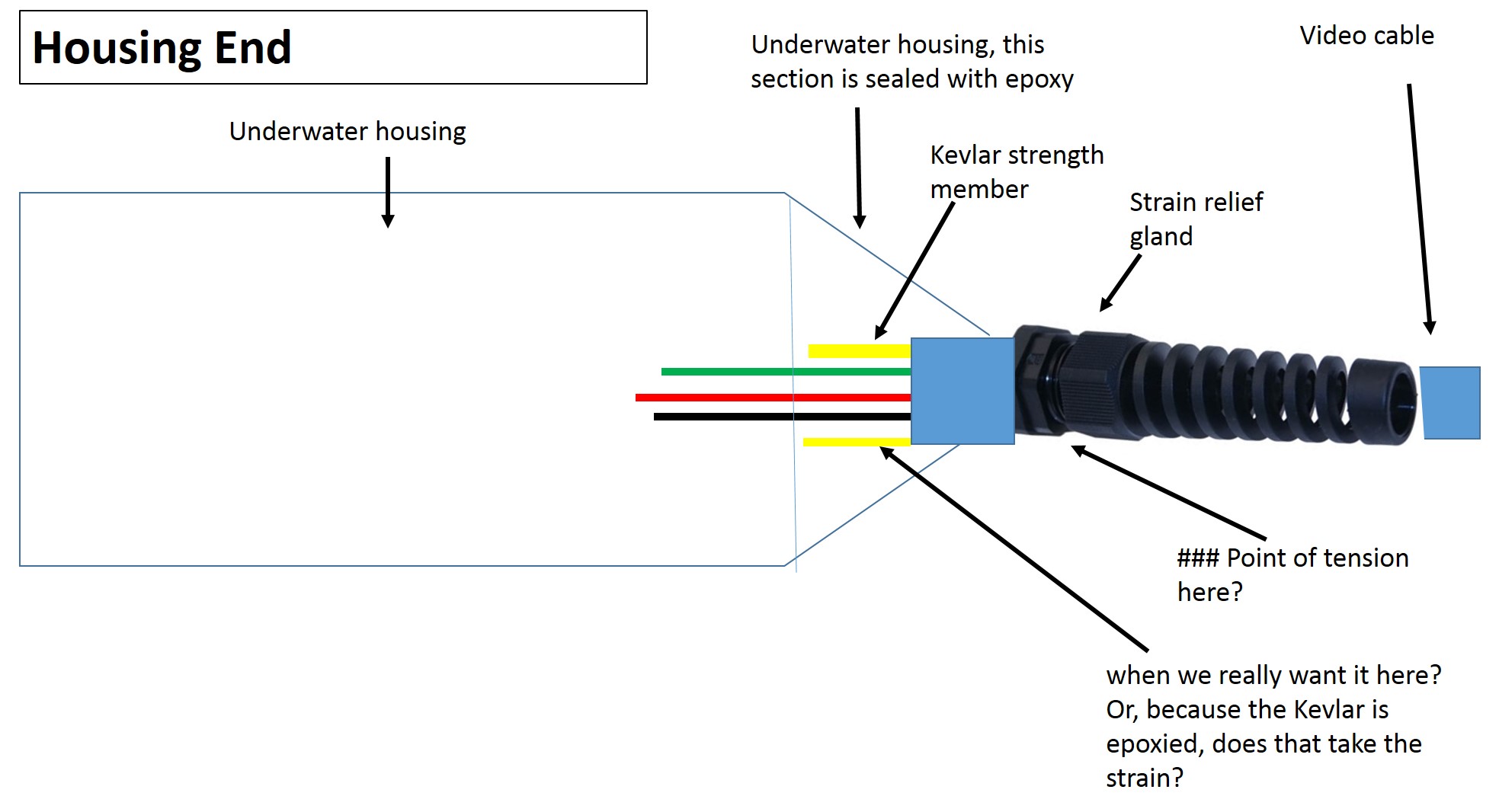 July 15, 2014 at 2:32 pm #35552
July 15, 2014 at 2:32 pm #35552timebandit
ParticipantHi
Where is the tow cable terminated on your drawing?
We often strip back the cable and tie off the dacron/kevlar to the lift/tow point
Then pot/epoxy the coffer into the housing.
Or use a Chinese finger/kellums grip on the cable and anchor that to the tow point (leave some slack).
Or do what you planned but maybe separate the dacron fibres into small bundles plait them tie a figure of eight at the ends and pot the lot !July 16, 2014 at 2:12 am #35553Kalbo
ParticipantYou could use para lock for your potting compound on the strength member, it will soak into your dacron, I have done this with kevlar before. You will need to splay out your dacron to the shape of the cone in your housing, taking it the full length of the cone if required and pot it, you could also put small protection sleeve over your coax and power cores as they pass through the potting, this would help protect them from crushing if a substantial load tension was applied.
While potting this keep your housing vertical and your cable coming straight out the bottom avoiding any bending.
Hopefully a link has appeared below, this will take you a supplier or the manufacturer of paralock. You may even get it from RS!
Hopefully this will help you a bit.
[url http://www.millfield-group.co.uk/millfield-wirelock/other-products/
July 16, 2014 at 12:12 pm #35554Ray Shields
ParticipantI would echo the idea of using a kellums grip/chinese finger on the cable to take the strain rather than relying on the kevlar. Similar to

Also, you do not want to pot the kevlar, any nicks in the cable and water wicks along the kevlar which would take it into the potting and possibly into your housing.
Generally on ROVs the Kevlar is braided/pleated and tied to the rov frame as a last "oh shit" failure of the kellums grip.
July 20, 2014 at 2:24 am #35555Marcus Gregson
Participantthat’;s great, thanks everyone for your advice.
Also, you do not want to pot the kevlar, any nicks in the cable and water wicks along the kevlar which would take it into the potting and possibly into your housing.
RayShields, can you explain to me how you have the kevlar tied to the ROV frame, but not potted?
The first picture below is how I would prep the cable before potting, and the second pic shows how I would pot the cable.
In my mind, I would have the cable outer intact past the cable gland to ensure a good seal, but then I am unsure how you would tie off the kevlar without potting it as the kevlar would have to exit the cable gland back the other way, and would then still be somewhat retained by some potting.
Or, do I only strip the cable outer to the point of the cable gland (third diagram) so that the kevlar does not enter the cable gland? I would be worried that there is no cable outer entering the cable gland so perhaps the seal is not adequate. I’m sure I have misunderstood something here, what am I missing?Many thanks,
Marcus
unpotted_423.jpg 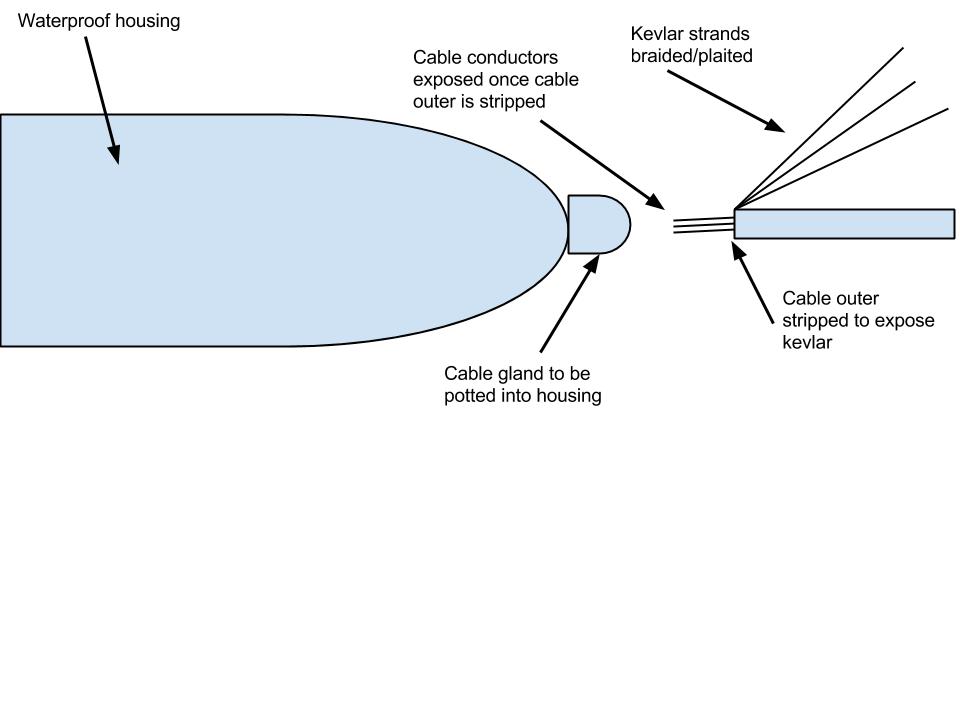
potted_105.jpg 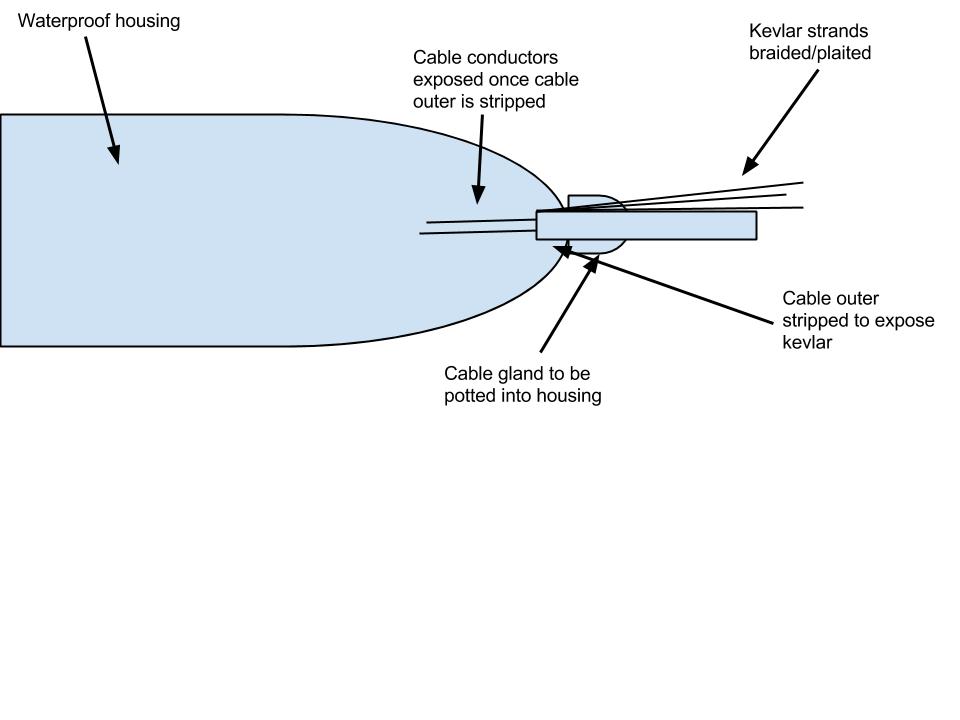
variation_to_cable_outer_563.jpg 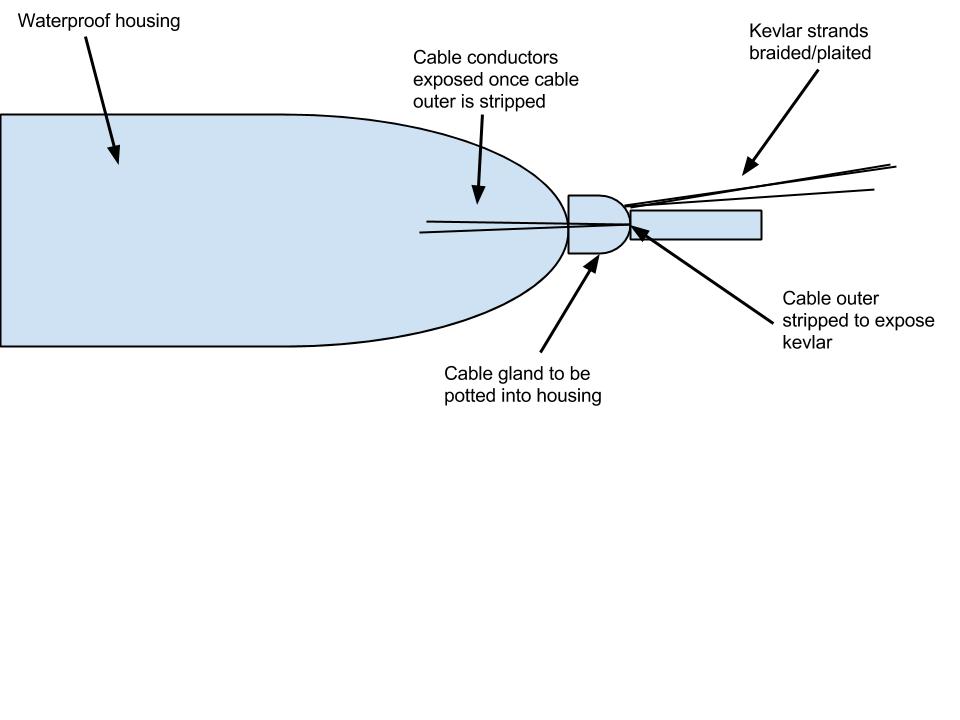 July 20, 2014 at 10:29 am #35556
July 20, 2014 at 10:29 am #35556Ray Shields
ParticipantI think the cable you are using is different to the one I was talking about. The ones I have seen for the ROV have an outer coating, a kevlar layer then an inner coating.

I think your cable appears to have the outer, the kevlar and then the individual wires, so in that case you would have to pot the kevlar. Just make sure that all of the kevlar was encased in the potting, as if you get a cut in your outer coating anywhere on the cable, water can easily wick up the kevlar and may get into your housing.
Using a Kellums grip/chinese finger is also still the best way to take the strain rather than relying on the kevlar.
July 20, 2014 at 11:36 am #35557Marcus Gregson
Participantaha, yes, thank makes sense, thanks Ray. You’re right, my cable only has the outer, then kevlar, then the inner conductors.
I will also look into the Kellums grips, thanks
-
AuthorPosts
- You must be logged in to reply to this topic.

